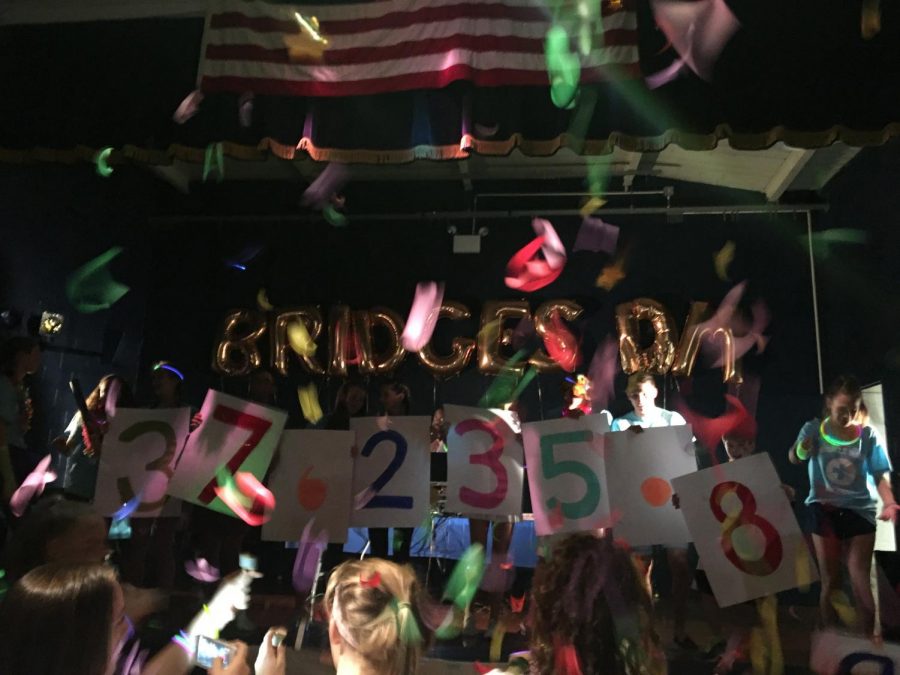Building bridges through dance
Children’s Bridges Teen Leadership Council aims to meet goal of $50K
October 27, 2017
For the third year in a row, The Children’s Bridges Teen Leadership Council will host a Dance Marathon, an event dedicated to raising money for Lurie Children’s Hospital.
Dance Marathon is an annual event that takes place across the country in various colleges and high schools. It truly is a marathon, as it ranges from 3 to 24 hours of dancing, games, and food. This year, the dance program, WERQ, will run the music and teach Zumba to the participants. The event will also feature catering from Giordano’s Pizza and Garrett’s Popcorn, games and raffle opportunities, and messages from patients and families.
“The dancing is always a fun time, and even if you aren’t much of a dancer, there are plenty of other activities to do. It’s such a good cause, and it is great be with friends who are all there to support the same goal,” said senior Stephen Hajjar, the treasurer.
After raising around $37,000 last year, Hajjar and the council, composed of students from New Trier, Woodlands Academy, and Loyola, have been working to meet their fundraising goal of $50,000.
The Children’s Bridges Teen Leadership Council was started by two Loyola students in 2015. One of the girls’ father worked as the head cardio surgeon at the hospital. They wanted to find a a way to connect the patients there to teens in the North Shore. After contacting Julie Troyer, the Dance Marathon coordinator at Lurie, the board was born.
Students got a first hand experience and heard from patient families during their annual kick off meeting at the hospital. They got to see what kind of impact they and the hospital had on these kids.
“From that experience we truly got an understanding for how important the work we are doing for the kids really is. It got everyone super excited for the dance,” said junior Caroline Trukenbrod, the Vice President of the board.
Over the summer the students also engaged in other fundraising events such as car washes, bake sales, and canning food.
The main portion of the donation comes from the participants of Dance Marathon, who can choose to be in one of the 22 teams. Teams are formed by students on the board who register to become team captains. Captains can then invite whoever they want to join their team.
It costs $35 to register, and each participant must have a minimum fundraising goal of $100. Each member of the team is encouraged to raise money towards the fundraising goal that the team agrees upon before hand. On average, a team will try to raise $3,000, which goes towards the universal goal of $50,000.
The captains also elect team names and often organize team attire. They are also expected to fundraise more than the team members they invite. Executive board members, like Hajjar and Trukenbrod, tend to bring in $500, while other board members raise around $350.
Senior Katie Lorenz, who has been on the board all three years, is a captain of a team named “FTK all DM day.” Lorenz often hosts meetings at her home and has worked tirelessly to contribute to the cause. Her team aims to raise $7,000 this year.
“It’s super cool to be a part of something bigger, something that is taking place all over the country. Bridges Dance Marathon is an incredible event, and I feel extremely lucky to be a part of it,” said Lorenz.
All of the Dance Marathon events feed into an organization called Miracle Network. As a whole, Miracle Network raised over $32 million last year. One of the biggest contributors to Dance Marathon is Penn State, raising about $15 million each year.
Since 1991, Miracle Network has raised over $200 million and 100% of the proceeds go to the 170 pediatric hospitals across North America. Nationally, there are 300 Dance Marathon programs and 250,000 student participants.
“Lurie Children’s Hospital is an amazing organization that has benefited so many people. When we visited the hospital and heard the patient’s stories, we knew how important the organization was to them and how much the hospital has impacted their lives,” said Trukenbrod.











































